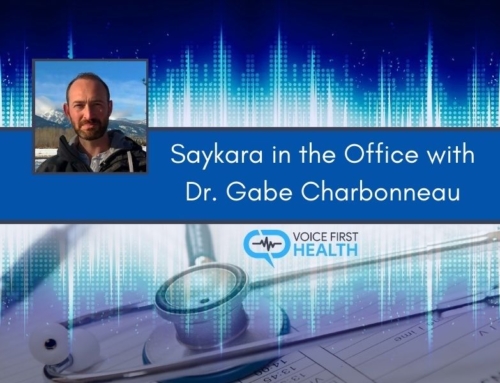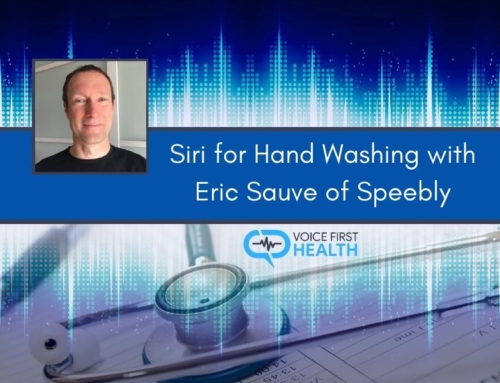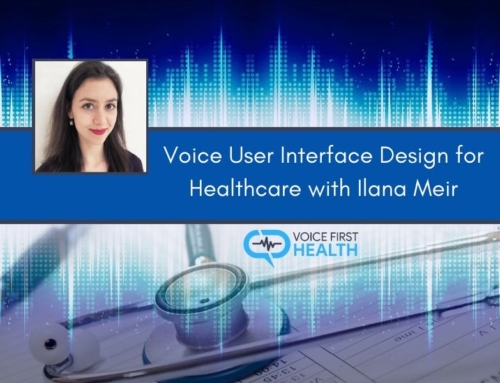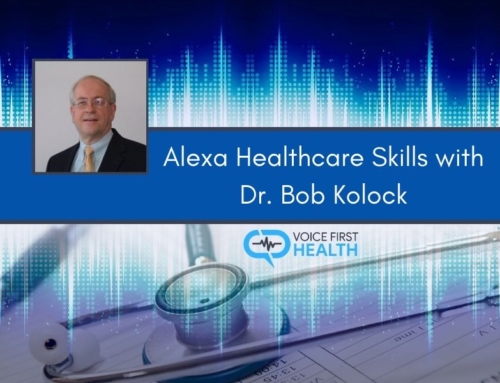VFH Episode 33
In this episode, Teri welcomes Dr. David Metcalf, the director of the Mixed Emerging Technology Integration Lab (METIL), at the University of Central Florida.
Dr. Metcalf has more than 20 years’ experience in the design and research of web-based and mobile technologies converging to enable learning and healthcare. METIL develops and researches emerging technologies in healthcare which includes everything from voice to blockchain. Dr. Metcalf comes on the show to talk about a whole bunch of their projects at METIL and his recent book on blockchain in healthcare. The lab’s team has built mHealth solutions, simulations, games, eLearning, mobile and enterprise IT systems for Google, J&J, VA, U.S. military and UCF’s College of Medicine among others.
Key points from Dr. Metcalf!
- METIL has a diverse range of emerging healthcare technology projects.
- How blockchain could be the backend to the frontend of voice when it comes to making some real changes and providing the best possible healthcare for patients and the society at large
Creating METIL
- Dr. Metcalf always wanted such a lab, and previously had one at NASA that was modeled after some of the labs that he admired like MIT’s media lab. He spun off the lab to go into the corporate space and later came back to academia to help young people do what he did. He helps them create spin-offs of their own and understand how to take emerging technologies and bring them out from the public sector to the private sector.
Compelling Nature of Voice
- Voice is going to be a more natural interface compared to using keyboards, mice, smartphones, wearables, etc.
Current Projects
- Their voice technology experience goes back to the interactive voice response days using technologies such as Microsoft’s Salesforce to build out their learning capabilities. People would say whatever products they wanted over the phone and it would give them back the information that they wanted in natural language.
- They have expanded upon that as new technologies like Alexa, Siri and Cortana have come on board. This enables them to build unique toolsets and apply them in new unique ways. They have applied them in some of the most advanced intelligent homes for health in Florida, nationally and worldwide. An example is the Lake Nona Medical City which has the WHIT (Wellness Home built on Innovation and Technology). METIL did all of the Alexa integration work for that home. Someone can talk to the home and ask any question about the health features of the unique home as well as control various features of the home by voice.
- METIL has worked on similar types of technology projects with a number of interesting companies like Cisco, GE, Florida Blue/Guidewell, Blue Cross Blue Shield, Johnson & Johnson, Philips, and Florida Hospital.
- They have also worked on projects for communities like Connected City in North of Tampa.
- They have explored other intelligent homes like the iHome with the Intelligent Health Association.
- They have also been involved in clinical setting projects. They worked with some physicians in the cancer ward of the Orlando Health UF Health Cancer Center, to put in place a social companion robot (Betty) that would be able to converse with and answer questions for some of the patients coming in to the waiting room and into the exam rooms. The main use case for this was to gather information on social histories, and having a cute engaging robot made this more effective and a better experience for the patients.

Strategies in the way the Robot (Betty) asks questions
- To ensure that people are more forthcoming with the robot (Betty), a team of psychologists did research on what works to engage people and make them more at ease, and these findings were used in developing Betty.
- Betty has a very pleasant female voice which expresses a lot of emotion and empathy within its speech patterns. She also tells jokes to disarm patients and develop rapport.
- What we choose to do about the patterns and use of voice and speech are really important to get right. A mechanized, computerized voice that feels cold and sterile may not have the same effect as something that feels warmer and engaging.
Current Status with Betty
- The robot is being expanded to hospitals and other health-oriented centers.
- It’s currently being expanded to the Orlando Health Foundry.
METIL’s Key Projects
- They are very interested in what’s going on with the ability to tie in voice and games. It is a great way to engage people socially.
- They are looking at ways that that can be used to engage people in their health using the same techniques.
- They are in the process of building some games that use voice to engage people in social play that helps with their health. They are doing this at the Center for Health and Wellbeing in Winterpark, Florida. They are looking at ways that they can enable both voice and motion-based games in that environment.
Blockchain and how it can Affect Healthcare and Voice in Healthcare
- Two areas that are exciting in healthcare are the front-end (i.e. voice technology and user experience), and the back-end (i.e. blockchain technology) to be able to verify records and trust those records between multiple organizations.
- The problem with some of the blockchain technology is that it is sometimes harder to use. There are multiple steps and people have to do certain things to be able to use the technology effectively.
- If the best front-end technology in voice can be paired with the back-end power of blockchain, that is going to create some new use cases.
Dr. Metcalf’s Book
- HIMSS asked Dr. Metcalf’s team if they could write a book called Blockchain and Healthcare. They wanted to make it very realistic with real-world case studies too. They had over 50 authors that contributed to the book in case studies, thought leadership, and chapters. They curated a book of some of the best thinking in blockchain across a number of different areas.
- They have written other books for HIMSS.









